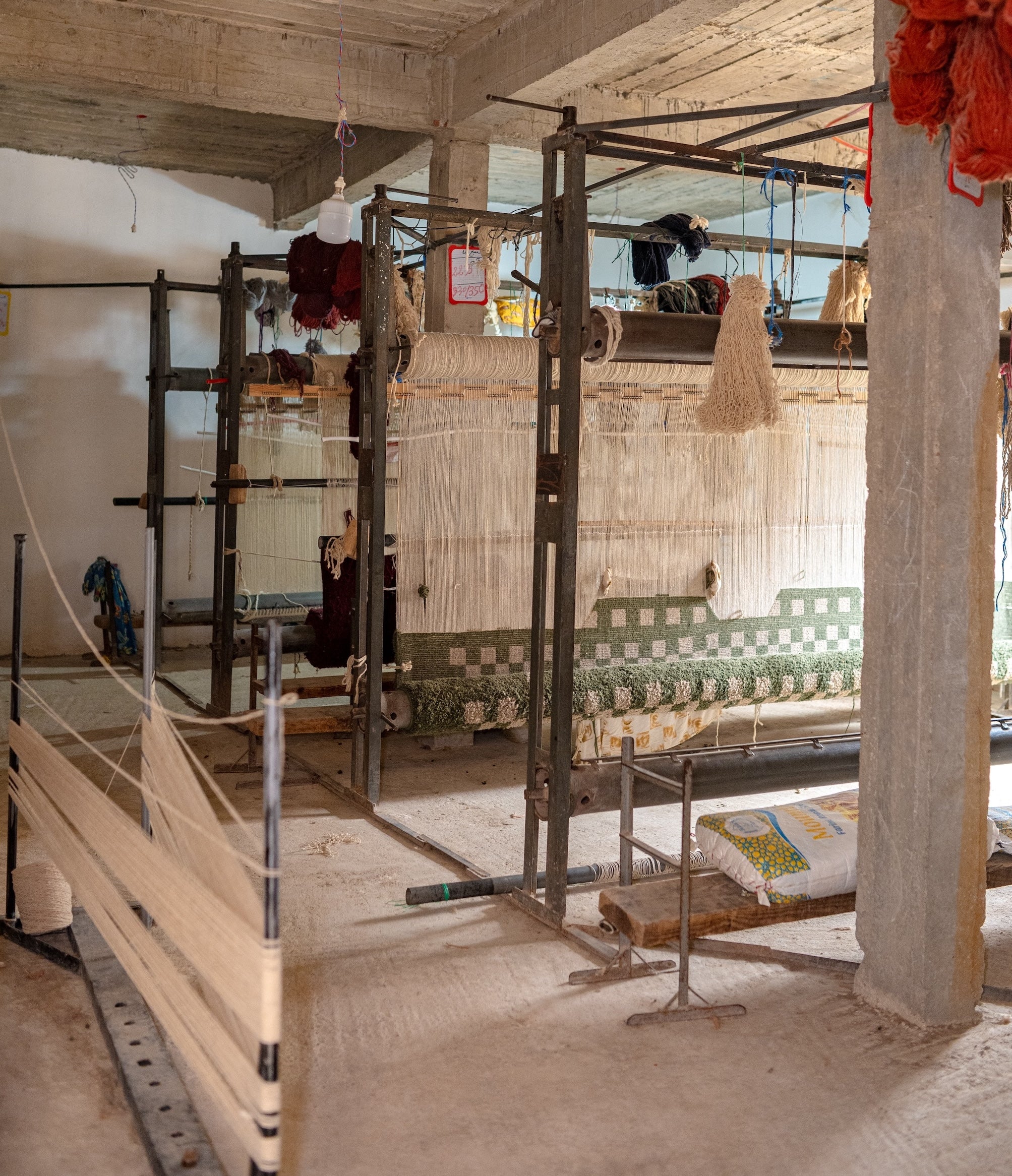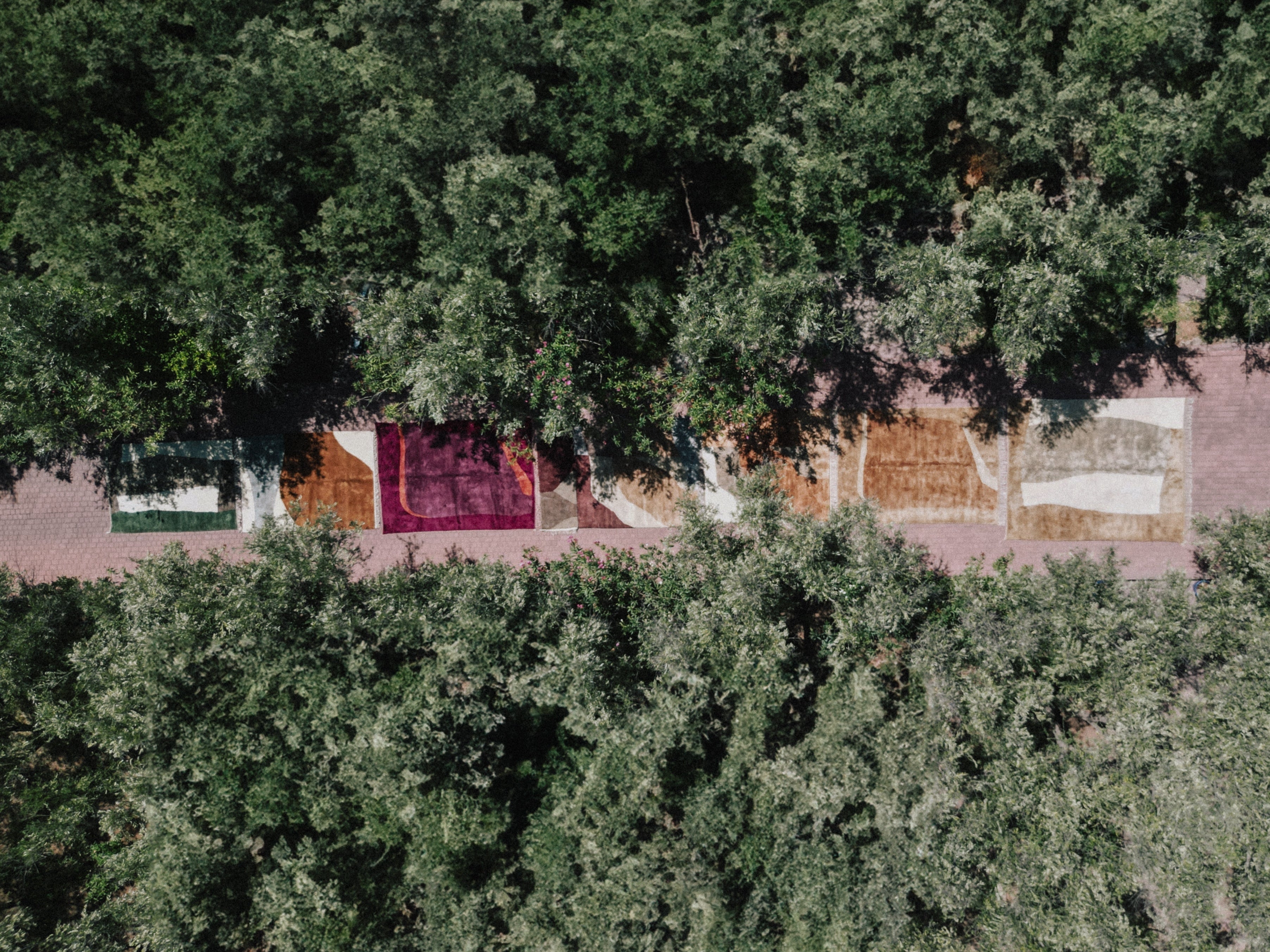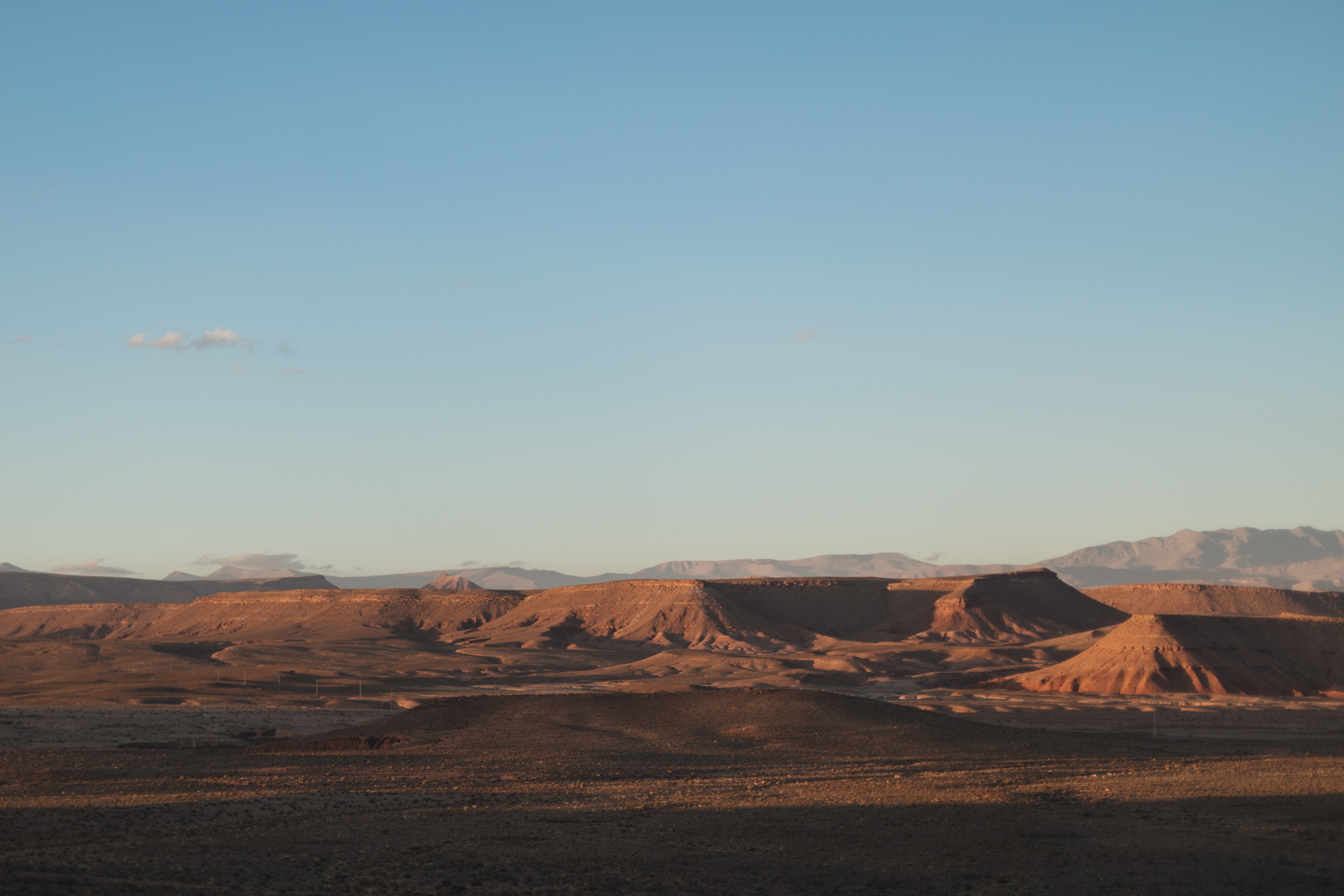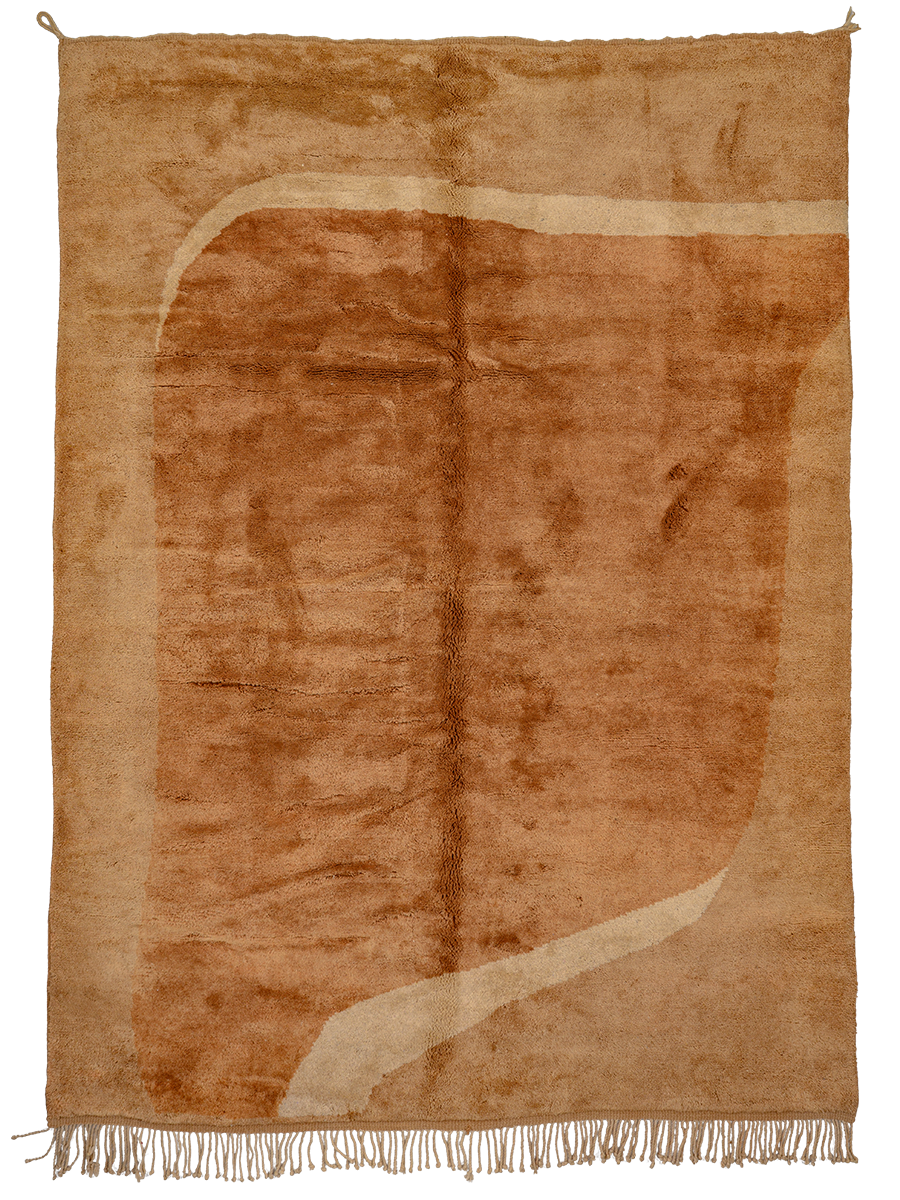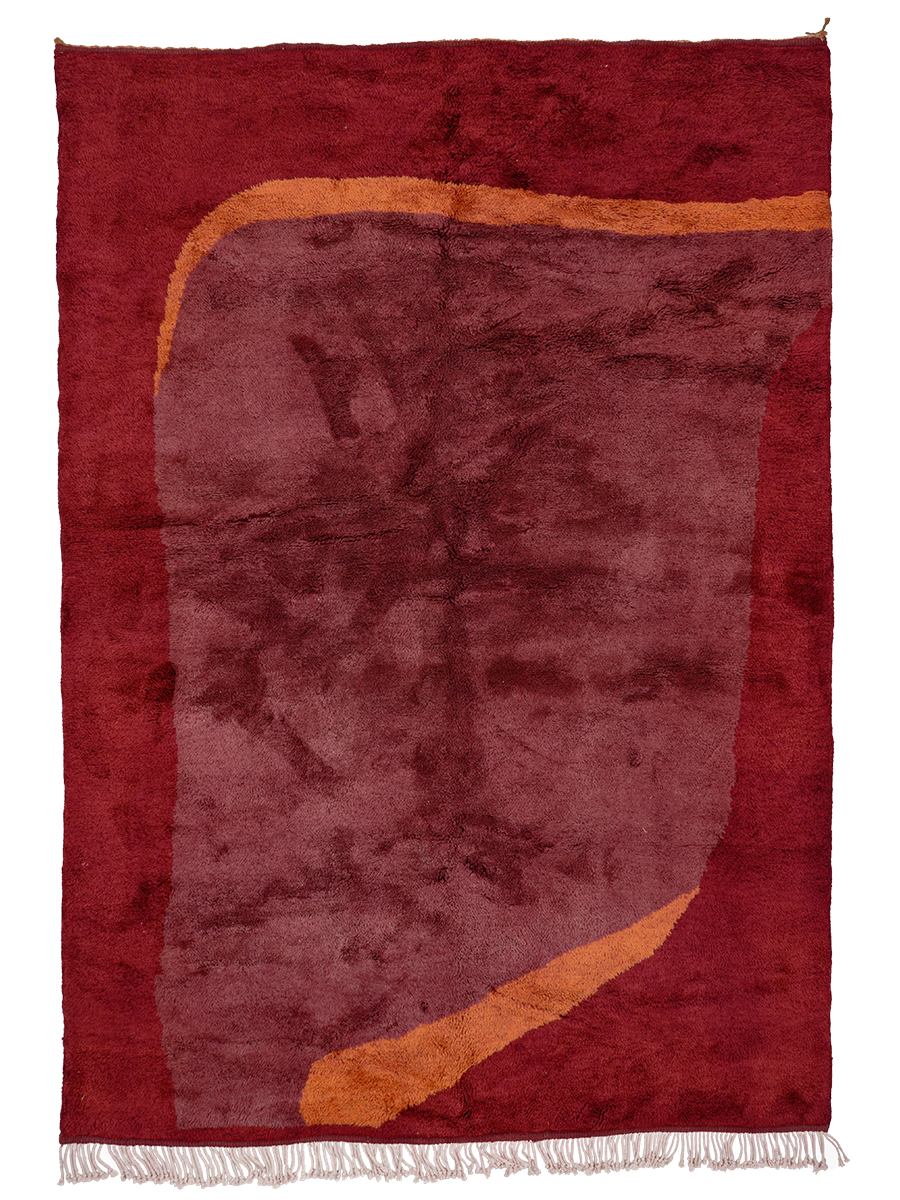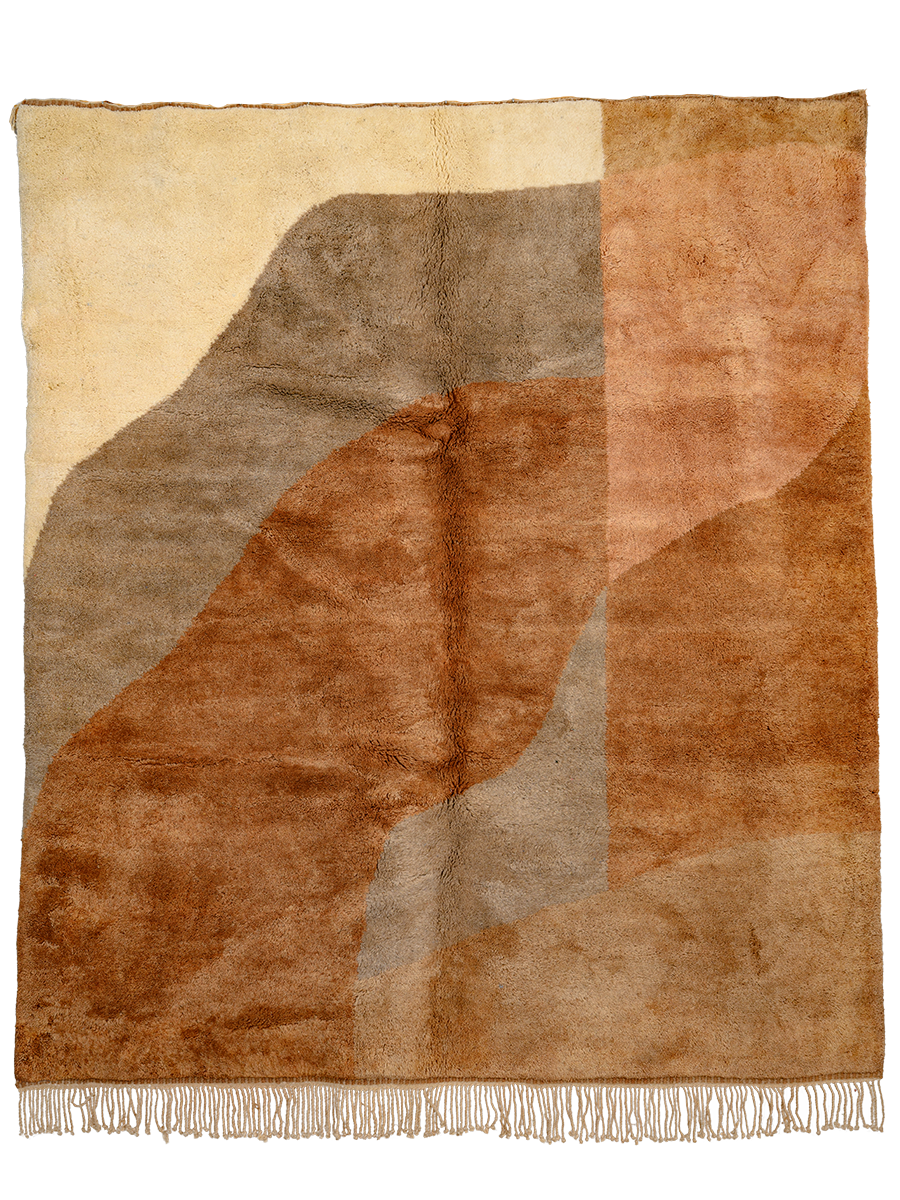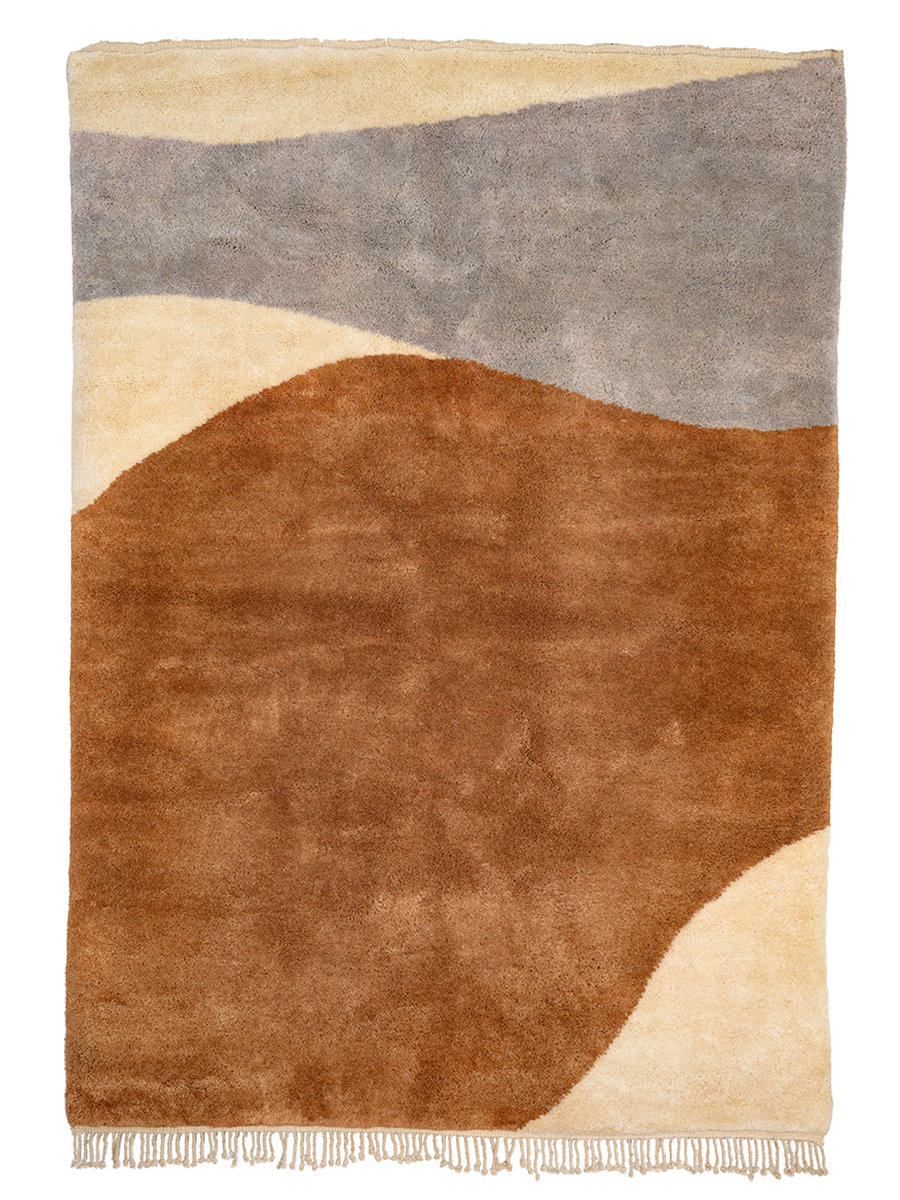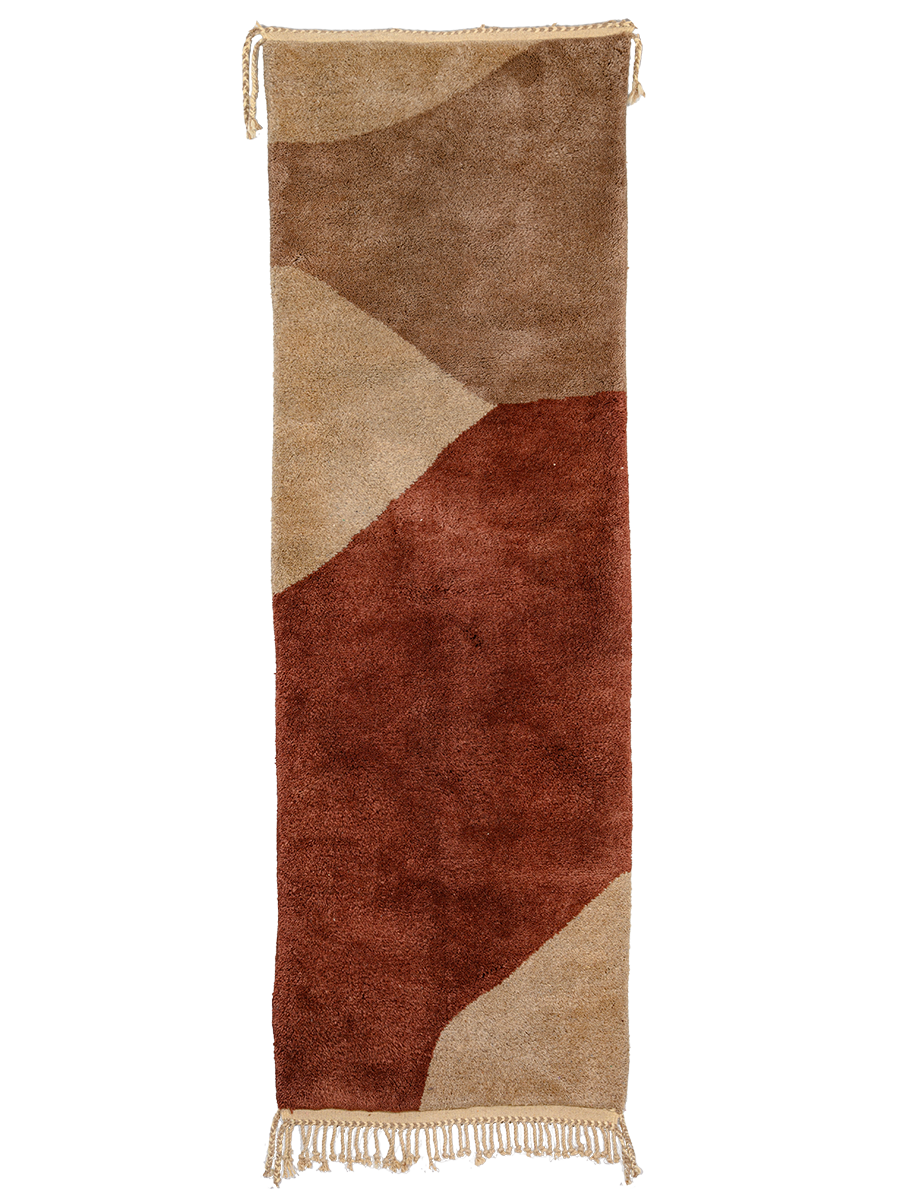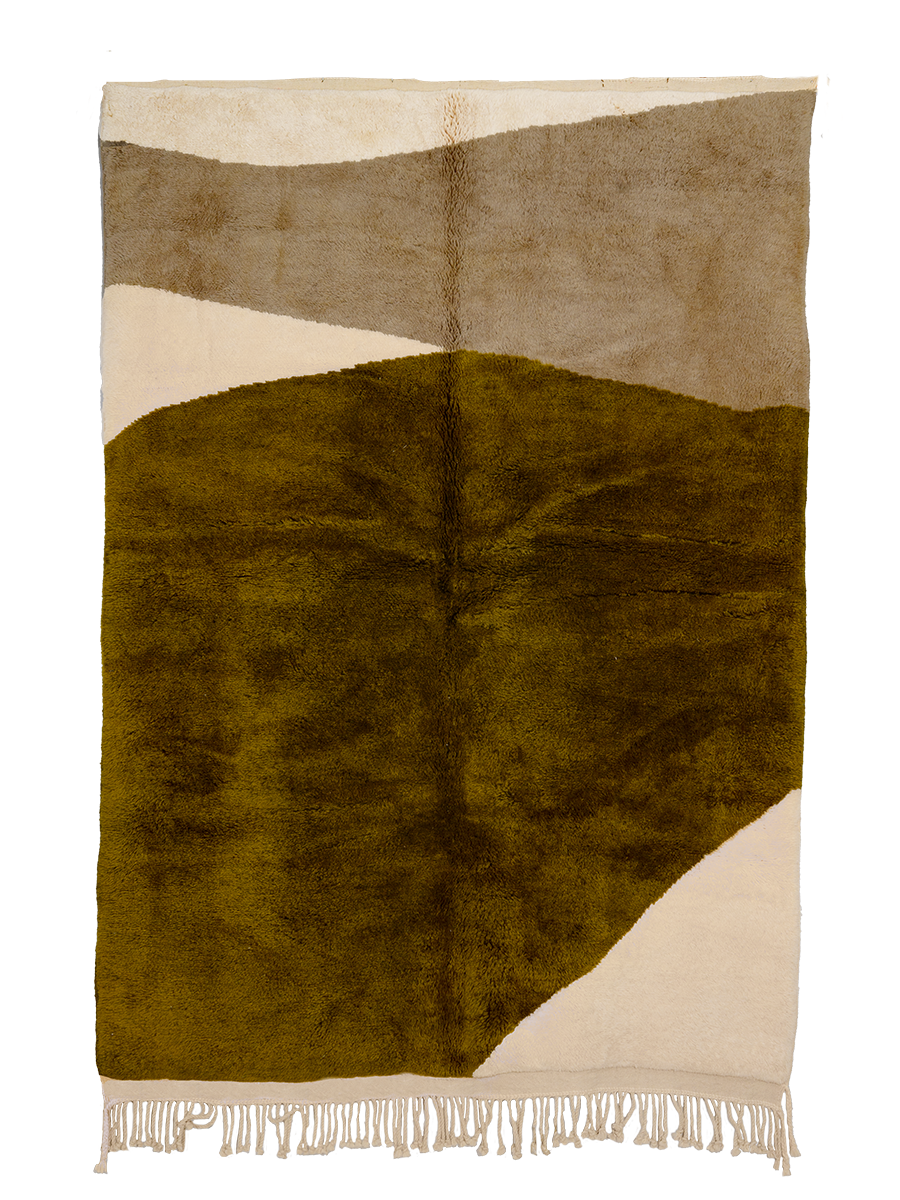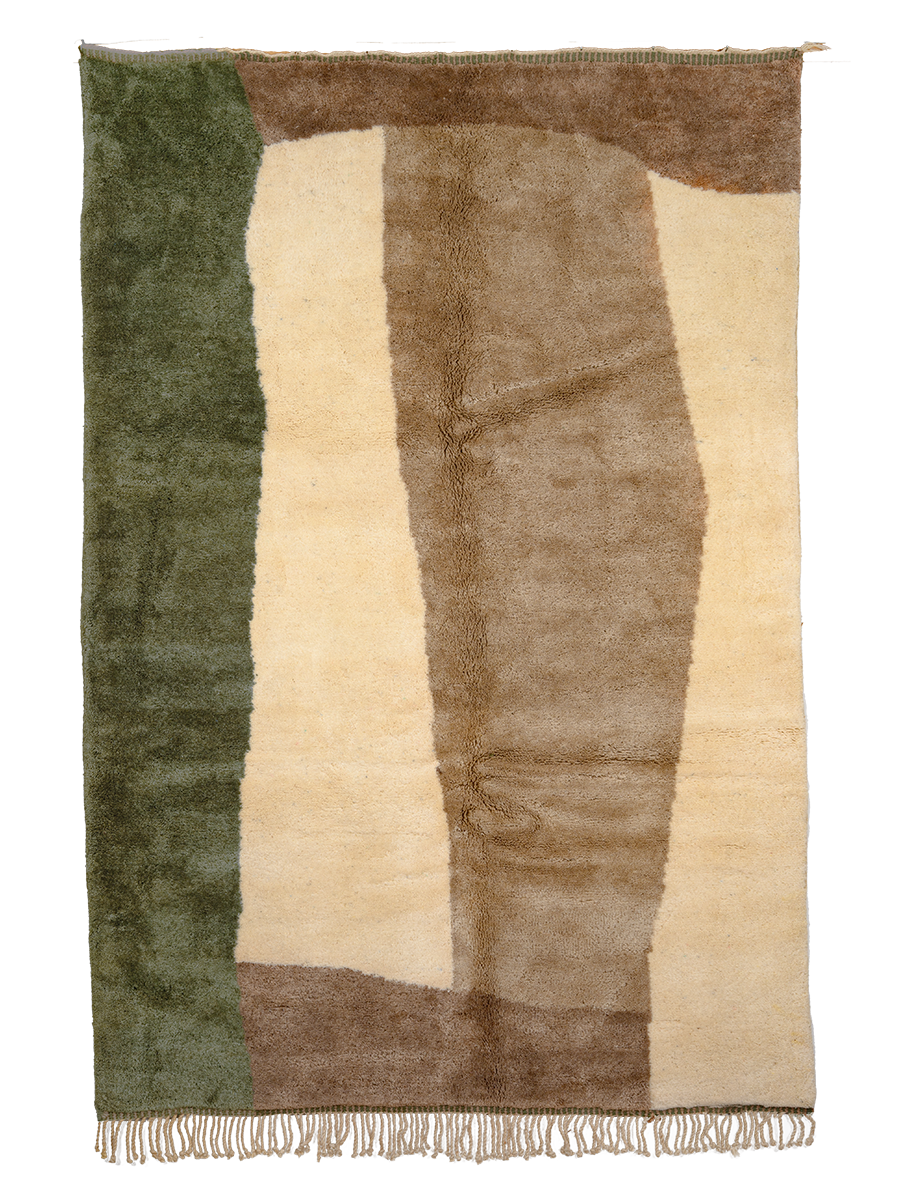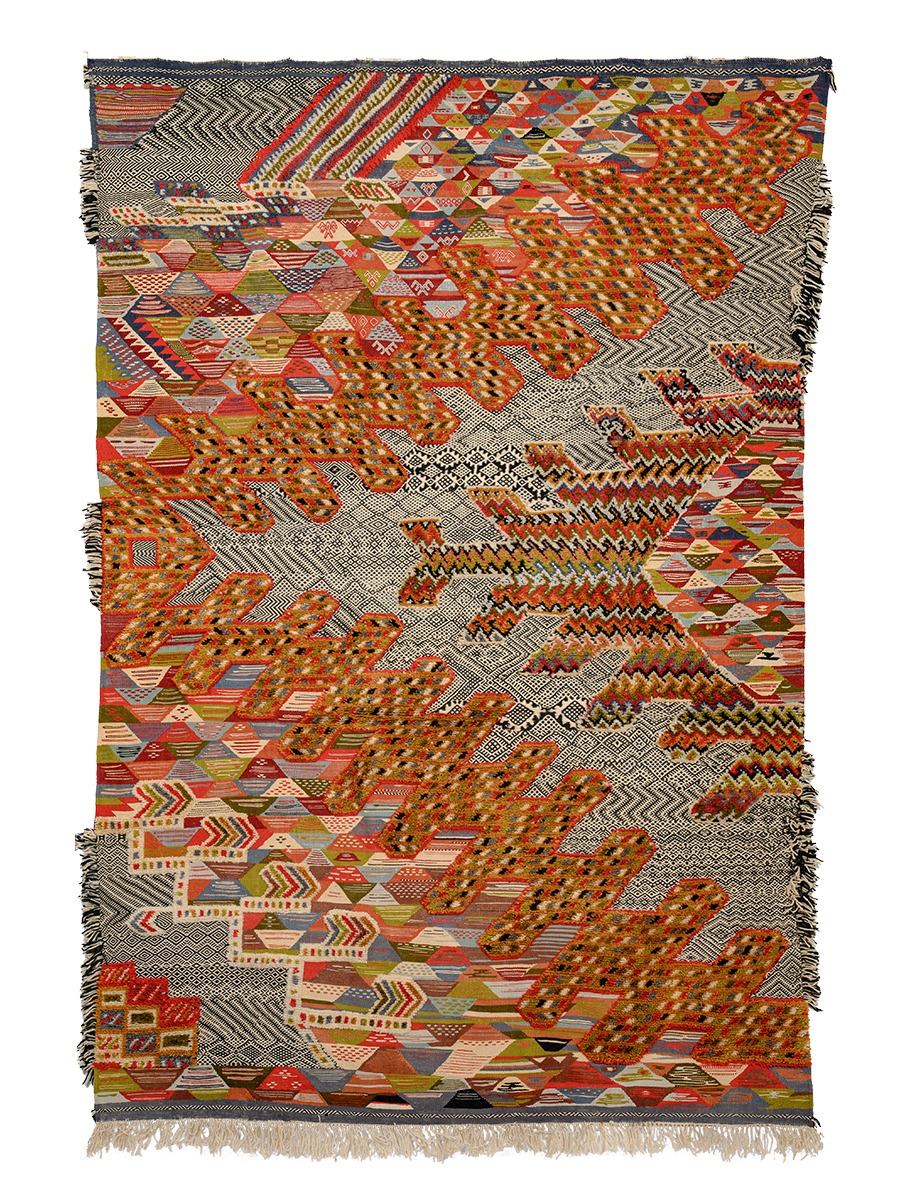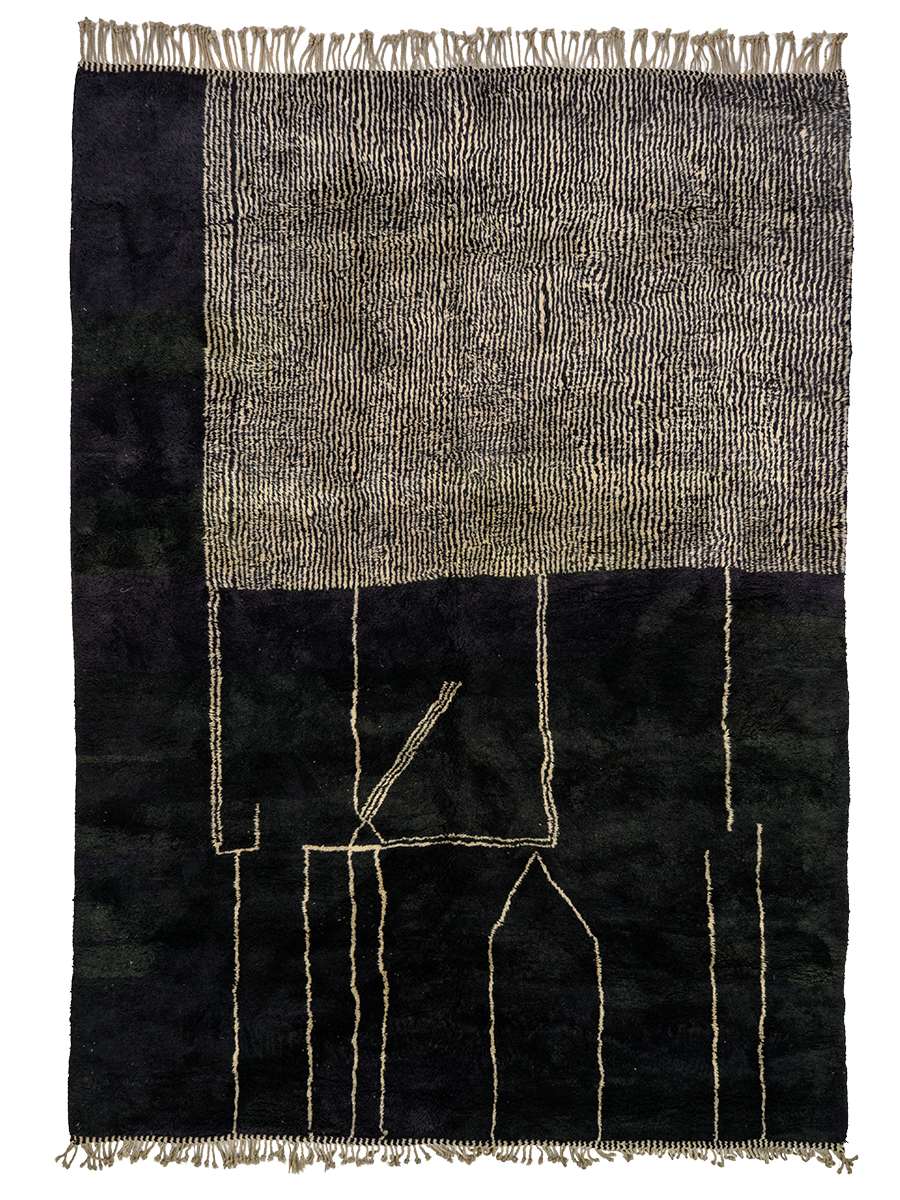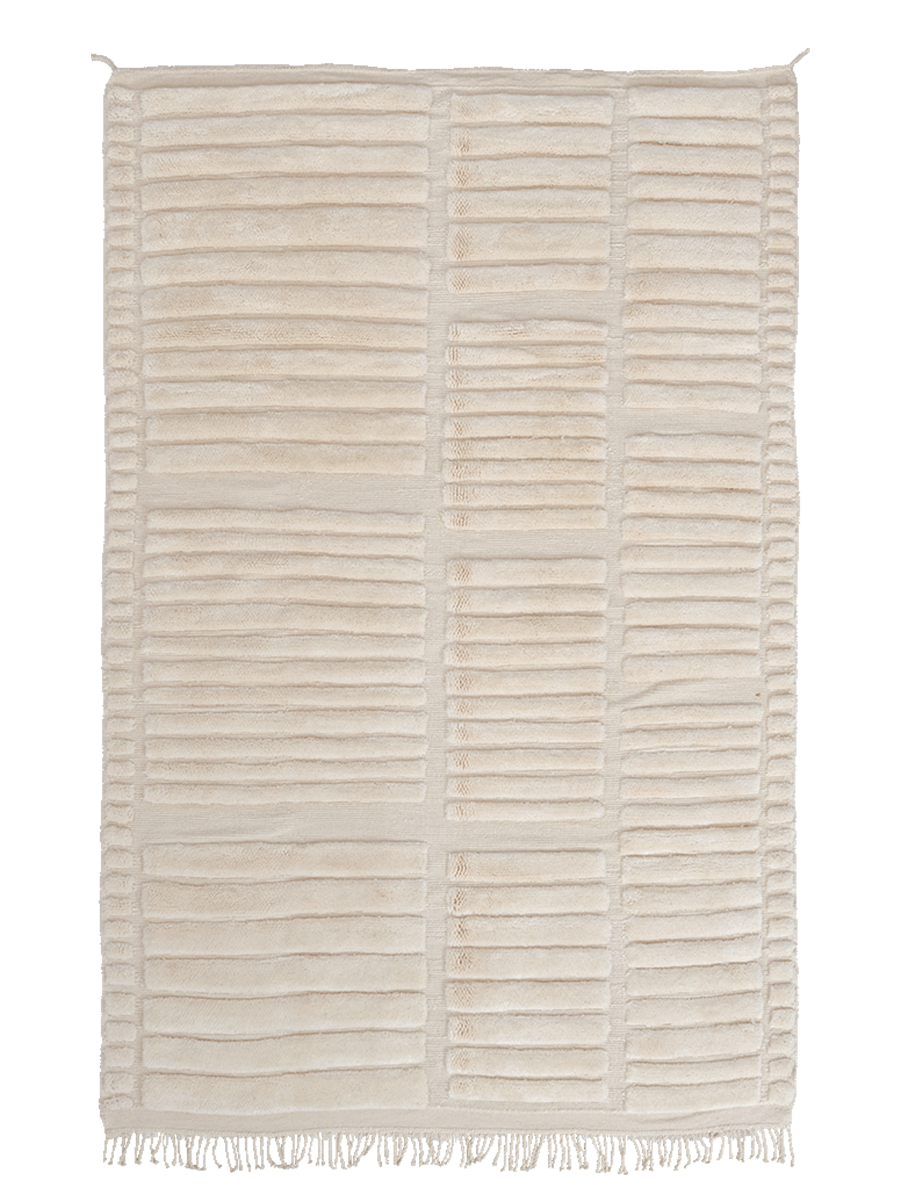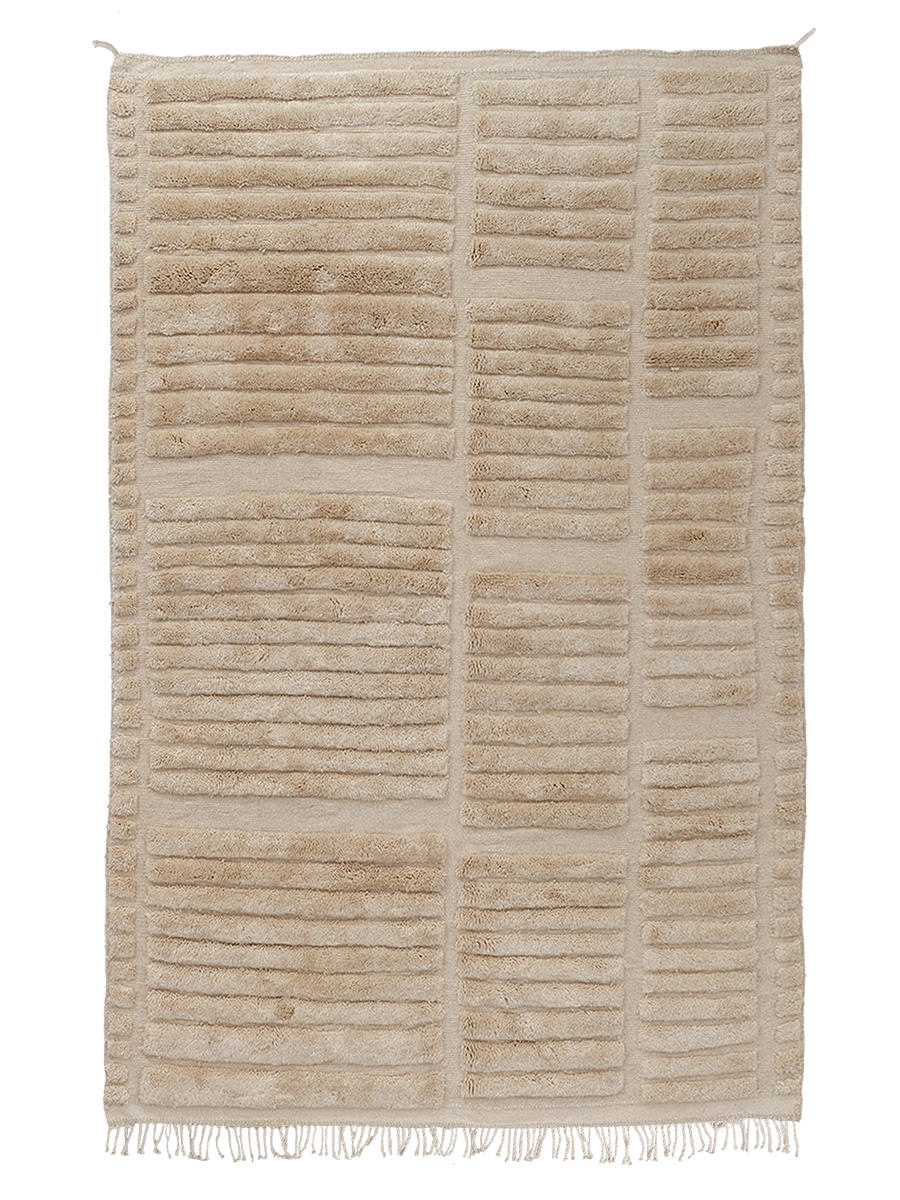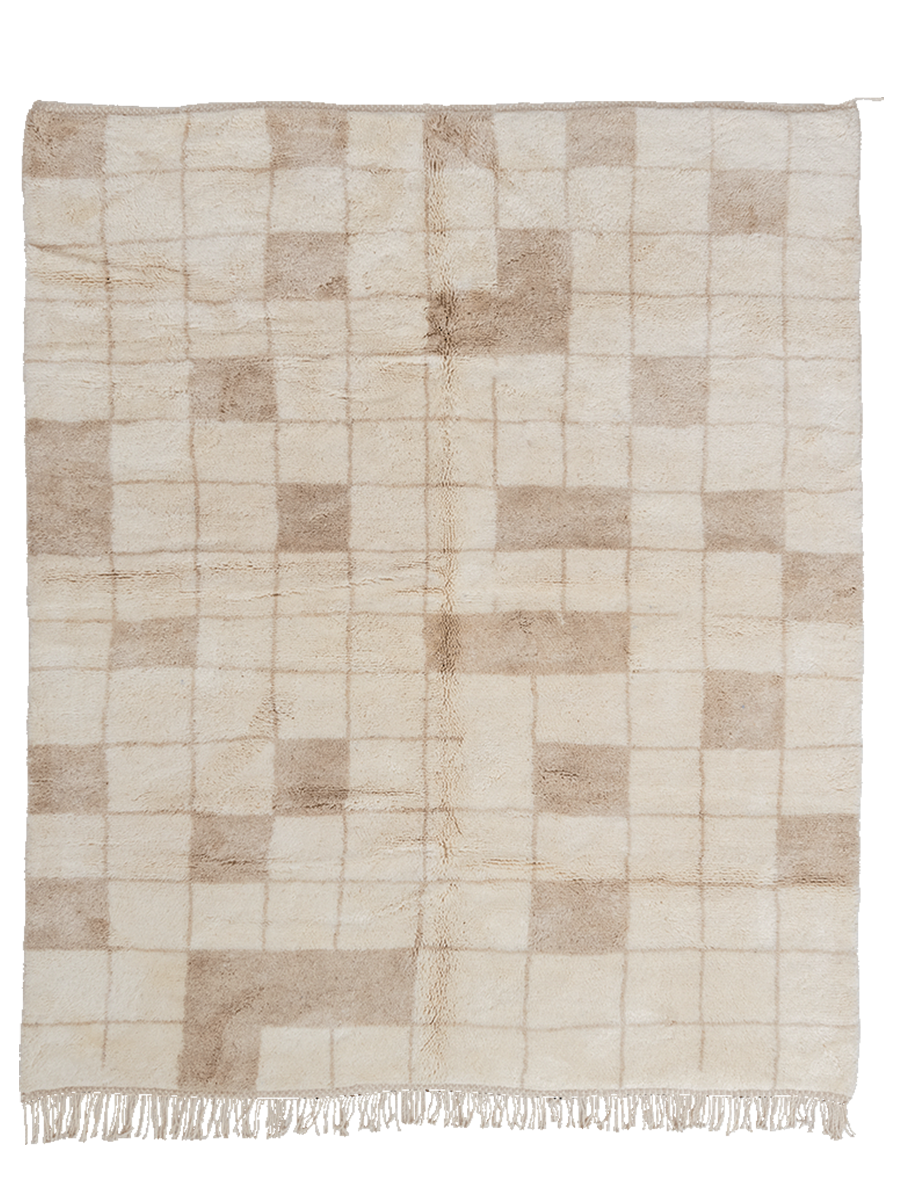Making a Moroccan Rug
Making a Moroccan rug is a lengthy process rooted in rich tradition. Amazigh women have, after all, been handweaving textiles since 600 B.C., passing the craft from generation to generation. Each step of the weaving process is imbued with meaning – everything from the harvesting and dyeing of the wool, to the construction of the loom, to the final design of the weave, is rooted in a traditional practice that helps make Moroccan rugs such singular treasures.
The WoolSalam Hello’s artisans use “live wool,” which means the wool is taken from live animals, without harm. Our rugs are made with sheep, goat, or camel wool. This practice not only preserves the life of the animal, but creates healthier, stronger wool.

Wool Preparation
Every step of the wool preparation process is done by hand. After the wool is sheared from the animal, the artisans wash, brush, and spin it into yarn, all with a personal, artful touch. 
Dyeing
Salam Hello’s artisans usually dye their wool themselves using local, naturally sourced spices, along with plant and herb blends.

Earthy reds come from henna, while pomegranate peels produce a brighter red. Yellow, on the other hand, comes from saffron and chamomile flowers, while light greens and browns come from olive leaves.
The Loom
The loom is the main instrument of the weaving process, and each textile is made on a vertical loom that is constructed by hand with traditional rituals to protect the loom and ward off evil.
For example, one common ritual involves an artisan breaking a piece of sugar against one side of the loom, and a date on the other.
Knot by Knot
On average, each rug contains 65,000 knots – all of which are hand-done by artisans. Depending on the size of the loom and weave, up to five women will sit at one loom and begin the weeks-long process of building a rug. The artisans start and finish weaving each time with a prayer called Istikara, so that God can allow the best intentions to enter the rug. 
Hammer Comb
After each row of knots is tied across the length of the loom, a pronged hammer comb is used to tightly press the weave of the rug. These combs are often carved with intricate designs to avert the evil eye.
Cutting From the Loom
Once the weave is completed, it must be removed from the loom. According to tradition passed down through generations, the artisans expertly cut the rug from the loom and hand tie the tassels, signifying the rug’s completion.
Washing and Drying in the Sun
Finally, the finished rugs are washed with water, scrubbed clean, and dried in the hot Moroccan sun, where eventually, they make their way to Salam Hello and the homes of customers who will enjoy them for years to come.


